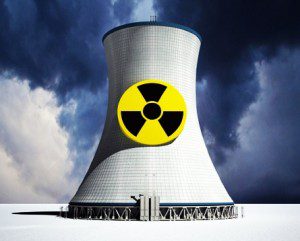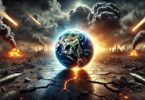By Ethan Indigo Smith and Andy Whiteley
Contributing Writers for Wake Up World
In a recent article we raised questions about GE’s (General Electric) response to the Fukushima Daiichi nuclear disaster. Wake Up World has since had the opportunity to speak with Mr. Christopher White, spokesperson for GE Corporate Communications. He had a lot to say on the matter of Fukushima, and we are very grateful he took the time to speak with us. Here’s what he had to say…
Examining the Company Line
Says Mr. White: “Nuclear energy is the cleanest base load power generation system available today”.
Sorry, what? We were initially taken back that he would refer to nuclear as the ‘cleanest’ anything, and asked him how he could back that statement, given the devastation of Chernobyl, Hanford, Three Mile Island, among many others — and now Fukushima. He stammered slightly and repeated his assertion, one that stands in contrast to the realities of the world’s worst radioactive disasters.
We were off to a shaky start…
[pro_ad_display_adzone id=”110028″]
Mr. White continued: “Every investigative body that has looked into the event at Fukushima, including the Japanese Government report to the IAEA, the Hatamura Committee, the NISA Interim Report and the DIET have concluded that the accident was caused by the Tsunami and resulting loss of seawater pumps and all electrical power. The reactor design was not cause of the accident.”
In fairness, we should note that the questionable reactor design was not the only factor at play here. According to a 2012 report in The Economist:
The reactors at Fukushima were of an old design. The risks they faced had not been well analysed. The operating company was poorly regulated and did not know what was going on. The operators made mistakes. The representatives of the safety inspectorate fled. Some of the equipment failed. The establishment repeatedly played down the risks and suppressed information…
With regard to Dale Bridenbaugh, the former GE whistle-blower who publicly criticized aspects of the reactor’s original design, Mr. White stated that “the changes made by GE addressed all his concerns”.
However Dale Bridenbaugh’s comments in a 2011 interview with ABC News suggest the nuclear engineer was less than confident.
Bridenbaugh told ABC News that he believes the design flaws that prompted his resignation from GE were eventually addressed at the Fukushima Daiichi plant. Bridenbaugh said GE agreed to a series of retrofits at Mark 1 reactors around the globe.
“Like with seismic refitting, they went back and re-analyzed the loads the structures might receive and beefed up the ability of the containment to handle greater loads,” he said.
When asked if that was sufficient, he paused. “What I would say is the Mark 1 is still a little more susceptible to an accident that would result in a loss of containment.”
… While he knew then that the Mark 1 had design limits, he said, no one knows now whether those limits will be surpassed.
Not surprisingly, global concern is mounting in the ongoing wake of the March 2011 disaster. And while GE’s company line may be that nuclear is the ‘cleanest.. power system’ available, more devastating effects of the Fukushima meltdown are still being discovered more than 2 years later.
Utility operators at the ailing plant revealed in July 2013 that contaminated water was leaking into the sea and poisoning the marine environment, according to an article in the Huffington Post:
Company spokesman Masayuki Ono told a regular news conference that plant officials have come to believe that radioactive water that leaked from the wrecked reactors is likely to have seeped into the underground water system and escaped into sea.
“We are very sorry for causing concerns. We have made efforts not to cause any leak to the outside, but we might have failed to do so”, he said.
Marine biologists have warned that the radioactive water may be leaking continuously into the sea from the underground, citing high radioactivity in fish samples taken near the plant.
Most fish and seafood from along the Fukushima coast are barred from domestic markets and exports.
As time goes on, the situation appears to keep deteriorating – despite the technical assistance provided by GE itself.
According to Christopher White, GE offered technical assistance to Hitachi and TEPCO in the immediate aftermath of the disaster, sent 20 mobile power generators to the scene to supplement the drowned diesel generators, and sent mobile health units to assist the Tamodachai Initiative in Japan.
He added that GE also donated US$10,000,000 in relief funding after the event, and GE employees another US$2,000,000.
At GE, the employees are clearly far more generous than the institution itself. To keep GE’s corporate contribution in perspective, it should be noted that its gross profit in 2011 exceeded US$59,400,000,000… its ‘donation’ coming to around $1 in every $6,000. Despite the odd global disaster, nuclear is obviously quite profitable. But are the industry players accountable?
As we continued, Mr. White pointed out that no one had died as a result of Fukushima industrial nuclear event. And although this statement may be true today, according to Dr. Maria Neira, the World Health Organization‘s Director for Public Health and Environment, the effects of ongoing radiation exposure on public health are predicted to worsen over time.
In a Reuters news report published on 28th February 2013, Dr. Neira said of the Fukushima report:
A breakdown of data, based on age, gender and proximity to the plant, does show a higher cancer risk for those located in the most contaminated parts…
… In the most contaminated area, the WHO estimated that there was a 70 percent higher risk of females exposed as infants developing thyroid cancer over their lifetime. The thyroid is the most exposed organ as radioactive iodine concentrates there and children are deemed especially vulnerable.
And that risk is already starting to manifest in the Fukushima community. As reported by rt.com on 20th July 2012:
… nearly 36 per cent of children in the nuclear disaster-affected Fukushima Prefecture have abnormal thyroid growths. This is an extremely large number of abnormalities – some of which, experts say, pose a risk of becoming cancerous.
After examining more than 38,000 children from the area, medics found that more than 13,000 have cysts or nodules as large as 5 millimeters on their thyroids, the ‘Sixth Report of Fukushima Prefecture Health Management Survey’ states.
When asked what GE was doing to educate the public about potential radiation dangers, Christopher White said nothing at this time.
When asked about the ongoing fuel removal process at Fukushima, Christopher White said he saw on the news that it was occurring and ‘could not speculate’ about the potential for accidents in fuel removal, or the potential magnitude of such accidents.
In reality – corporate formality aside – further problems at this site are possible.
And therein lies the core problem – the nuclear industry as a whole does not have the capacity to adequately foresee and mitigate all the variable risk factors inherent in nuclear operations, or the integrity to admit the full extent of the problem.
And now we’re counting the cost.
Pandora’s Box
Nuclear experimentation is still just experimentation. It is a Pandora’s box.
Startlingly, the model of thinking in the nuclear industry appears to be that they can contain the uncontainable. And they are failing to address real possibilities – like the possibility of a 9.0 earthquake and a subsequent tsunami causing a power outage, sea-water pump failure and drowning the reserve generators.
But more importantly, they are risking the unriskable. The nuclear industry and the governments that support it are gambling with our health, and the future of our planet. Even industry insiders are starting to voice their concerns.
According to a March 2012 article in The Economist, Philippe Jamet of France’s nuclear regulator, the ASN, believes “that Fukushima demonstrates a shortfall in imagination, not just in Japanese regulators but also in people like himself.”
“If you had asked me a year ago about an accident in which multiple units were left without power and cooling,” he says, “I would have said it was not credible.”
The article continued:
A worst-case analysis by Japan’s Atomic Energy Commission… suggested that if the hot fuel was indeed left high and dry, people as far away as parts of Tokyo* would need to be evacuated and everyone in the capital would have to stay indoors.
[*] approx. 238 kms/148 miles
At least now we have a clearer idea of what’s going on; it seems the entire nuclear industry is dangerously disfunctional.
In spite of the company rhetoric, the discussion with Christopher White was respectful and at times heated. He referred us to the pro-nuclear movie Pandora’s Promise. As Mr. White apparently missed the irony, we referred him to the lesson of the mythical Pandora who, although she was warned not to, opened “the box”, releasing numerous evils into the world. When she tried to put the lid back on, she found it was too late – she could not contain what she had unleashed.
It’s time for a new way of thinking. With countless clean energy technologies available today, the supposed benefits of nuclear energy are far outweighed by the global risk — of starting a fire that burns for ten thousand years.
Peace on Earth, only for real.
Recommended reading:
- A Little Green Revolution: the Rainbow Warriors will Heal the Earth Mother
- 6 Inspiring Eco-Friendly Initiatives from the Small Island of Sardinia
- The Ten Inventions of Nikola Tesla Which Changed The World
- UK Solar Community Housing: a Gentle But Effective Mutiny
- Innovative Waste-to-Energy Program is So Effective That Sweden Has Literally Run Out of Rubbish
- Can the Desert Sun Power the World?
Previous articles by Ethan:
- How to Enhance Intuition: Understanding the Four Forms of Awareness
- How to Overcome the Hegelian Dialectic, a Political Mechanism that Limits Social Thinking
- UK’s Proposed Ban on Esoteric Knowledge: Why Institutions Seek to Limit Access to Information
- Individual Ignorance is Strength to Institutions
- A Little Green Revolution: the Rainbow Warriors will Heal the Earth Mother
- The 5 Tibetan Rites of Rejuvenation: 108 Movements to a Meditative Mind State
- The Brotherhood of Man: a Tibetan Perspective
- Political Formality and Truth
- Oligarchical Collectivism and the Four Steps to Learning Politics
About Ethan Indigo Smith:
 Ethan Indigo Smith was born on a farm in Maine and lived in Manhattan for a number of years before migrating west to Mendocino, California.
Ethan Indigo Smith was born on a farm in Maine and lived in Manhattan for a number of years before migrating west to Mendocino, California.
The events of September 11, 2001 inspired him to write his first book, The Complete Patriot’s Guide to Oligarchical Collectivism, an insightful exploration of history, philosophy and contemporary politics.
His more recent publications include:
- The Matrix of Four, The Philosophy of the Duality of Polarity on the subject of the development of individual consciousness
- the controversial The Terraist Letters, a work that humorously contrasts the very serious issues of global nuclear experimentation promotion and global marijuana prohibition
- Tibetan Fusion a book of simple meditative practices and movements that can help you access and balance your energy, and
- The Little Green Book of Revolution an inspirational book based on ideas of peaceful revolution, historical activism and caring for the Earth like Native Americans.
Visit Ethan on Facebook and check out Ethan’s author page on Amazon.com.
About Andy Whiteley:
I’m just an average 40-something from Melbourne Australia who, like many people, “woke up” and realized everything isn’t what it seems. Since then, I’ve been blessed to be a part of Wake Up World and its amazing community of readers.
[pro_ad_display_adzone id=”110027″]







